Hanukkah in LBI collections
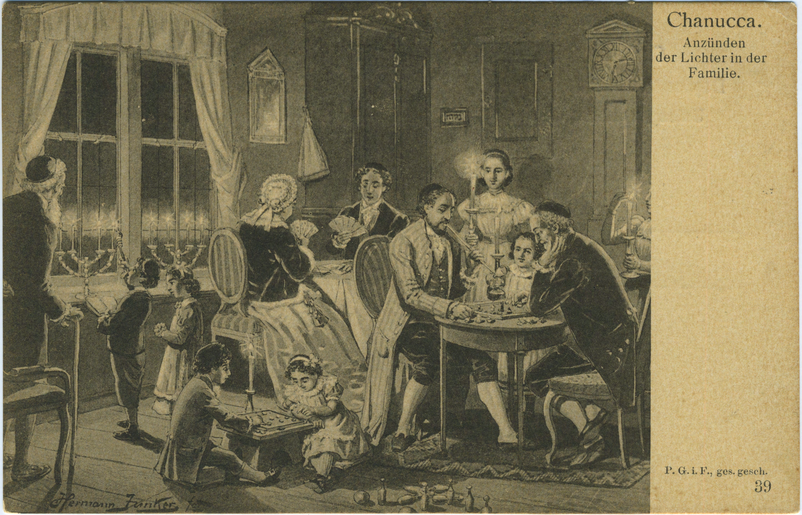
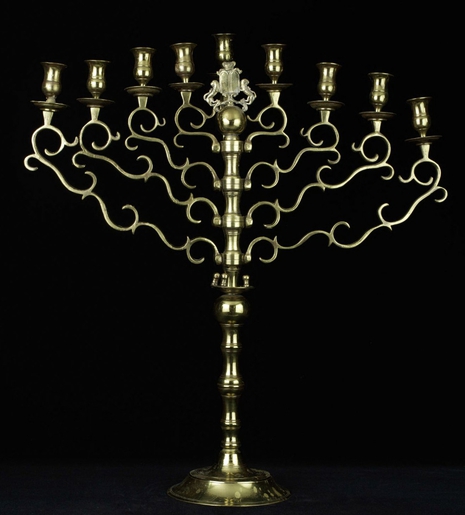
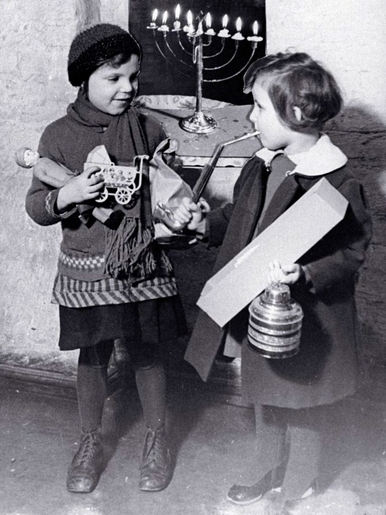
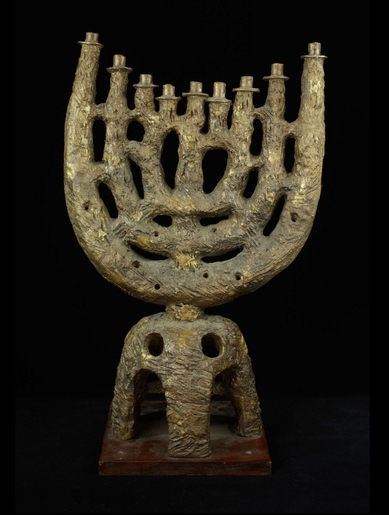
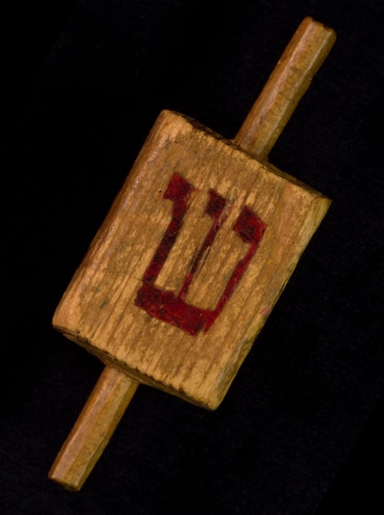
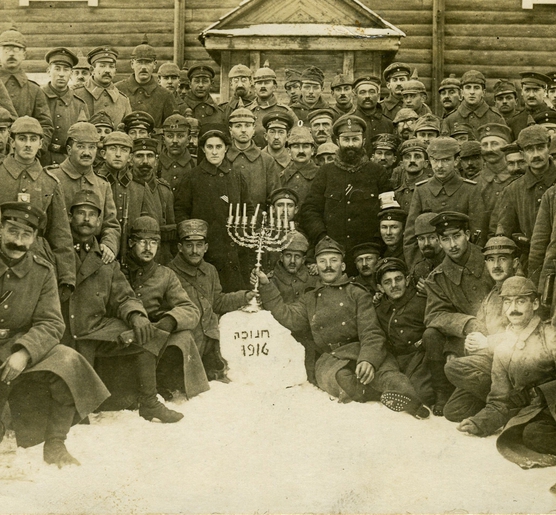
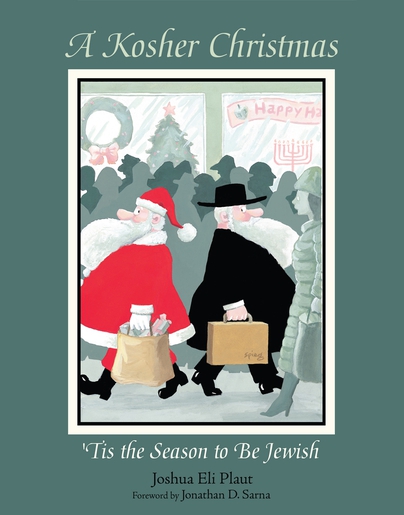
Hanukkah is the Jewish Festival of Lights, and it is observed for eight days in the Hebrew months of Kislev and Tevet: usually in December or in late November. The holiday of Hanukkah exists only by Rabbinic decree, and it is not described in the Torah. This gives it a lesser status than other holidays, like Passover and Sukkot, but it is none-the-less universally observed, and its festive atmosphere is loved by many. Hanukkah is also one of the best-known Jewish festivals, undoubtedly due to its proximity to Christmas.
Hanukkah commemorates historic events from the 2nd century BCE, when Jerusalem and Judea were part of the Seleucid empire (one of three successor states after Alexander the Great): King Antiochus IV Epiphanes, who ruled from 175 BC until his death in 164 BC, tried very hard to Hellenize his dominion, banning many Jewish practices. When Beit HaMikdash, the holy Jewish temple in Jerusalem, was put under military occupation, a rebellion successfully drove out the Seleucids. The revolt was led by Judas Maccabeus and his four brothers, the sons of High Priest Matityahu. The Maccabees entered the Temple to cleanse it and rededicate it to divine service. This is how Hanukkah got its name: “Hanukkah” means Dedication, and it refers to this re-dedication that occurred after the successful rebellion.
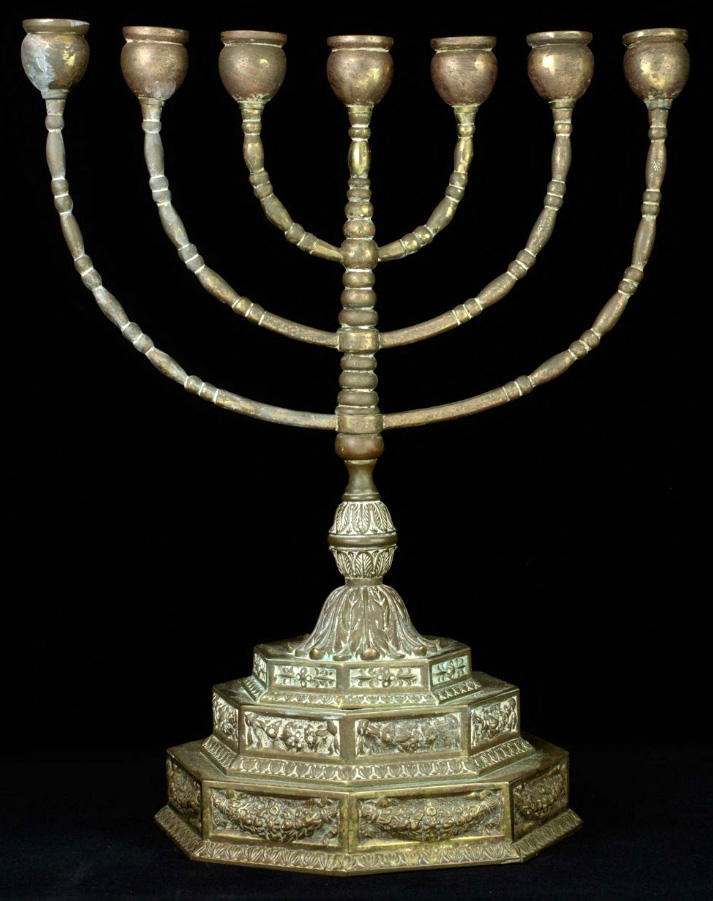
One of the priestly tasks of rededication was to light the Menorah, a huge, golden, seven-branched candelabrum that stood in the temple. For this ritual, only pure olive oil that had been certified for use could be employed. When searching the ransacked temple, the Maccabees only found one cruse of oil. This was hardly enough to keep the Menorah lit for one single day, but miraculously the small amount of oil burned for eight days! This was just enough for the Maccabees to obtain fresh oil and fulfil the commandment to keep the Menorah lit.
One lovely story links the cruse of oil found by the Maccabees to the olive branch brought by the dove to Noah on his ark in the book of Genesis. A chain of provenance is given, passing through the Patriarch Jacob and other figures, delivering the precious oil to the Temple Mount to be hidden and rediscovered by Judah Maccabee at the right time.
But then again, more simply put: late November/early December is simply the season for harvesting overripe olives and pressing them into oil…
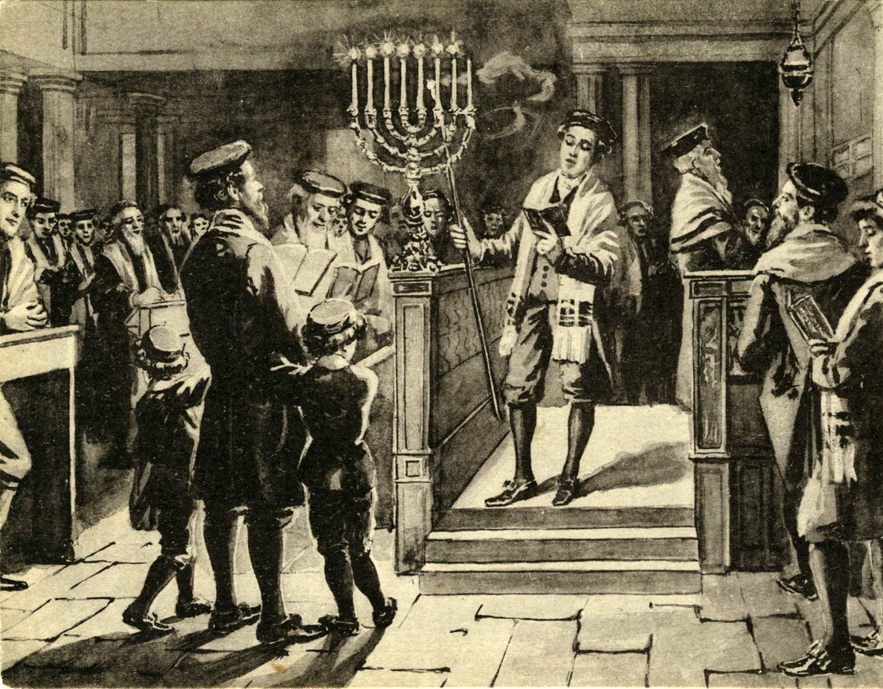
The best-known observance of Hanukkah is the kindling of the Hanukkiah, a nine-branched candleholder that is lit to commemorate the miracle that occurred during the rededication of the Jewish temple. On the first night of Hanukkah, one candle - designated to be the Shamash, or “helper” – is lit and then used to light one other candle. On the second night, the Shamash lights two candles, and so on until the eighth night, when all lights are lit. Each night, the Hanukkiah is lit and placed in the window, to publicize the miracle to the outside world. In the words of the Talmudic sage Hillel, each day of Hanukkah represents an increasing level of holiness, as on each day the original miracle became more apparent and impressive to observers. - Please click here to see pictures of Hanukkah lamps in the collections of the Leo Baeck Institute.
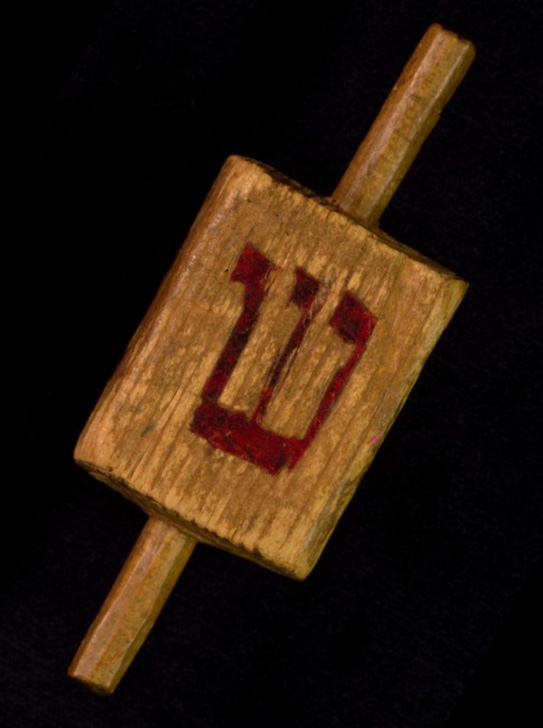
Today, the Jewish family gathers around the Hanukkiah, sings songs, and gives fruits or sweets (or even larger presents) to the children. Quite popular are chocolate-coins, known as Hanukkah Gelt (Yiddish for “money”), which in turn can be used to play some rounds of Dreidel: Dreidels, are four sided tops used for light gambling to win other players’ Gelt. Each side of the Dreidel is adorned with a Hebrew letter, representing the sentence Nes Gadol Haya Sham ([a] Big Miracle Happened There) and also to advise the dreidel player, to either add or to take from the pot of money. There also is a Yiddish card game known as Kvitlech, and in any case, foods fried in oil, like potato-latkes or donuts are served. Donuts are particularly common: known as Sufganiyot in Israel, they are filled with jellies or creams. Many bakers compete year after year to make increasingly complex and outlandish Sufganiyot.
In the synagogue, each day of Hanukkah has its own special Torah reading from the Biblical book of Numbers, verses 7:1 to 8:4. This is the chapter in the Torah that describes the final dedication of the Tabernacle (the holy temple’s forerunner) during Sukkot, concluding with the commandment to keep a light on the temple’s Menorah. What an elegant choice on part of the rabbis, to deftly linking the biblical dedication of the Tabernacle with the historic re-dedication of the temple during the festival that is called “dedication”, Hanukkah!
And in any case, the lighting of the Hanukkiah brings light into the year’s longest darkness, just before the winter’s solstice on December 21.